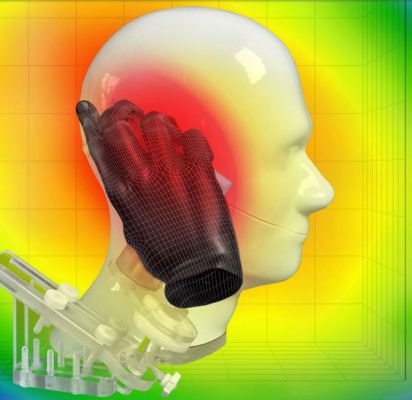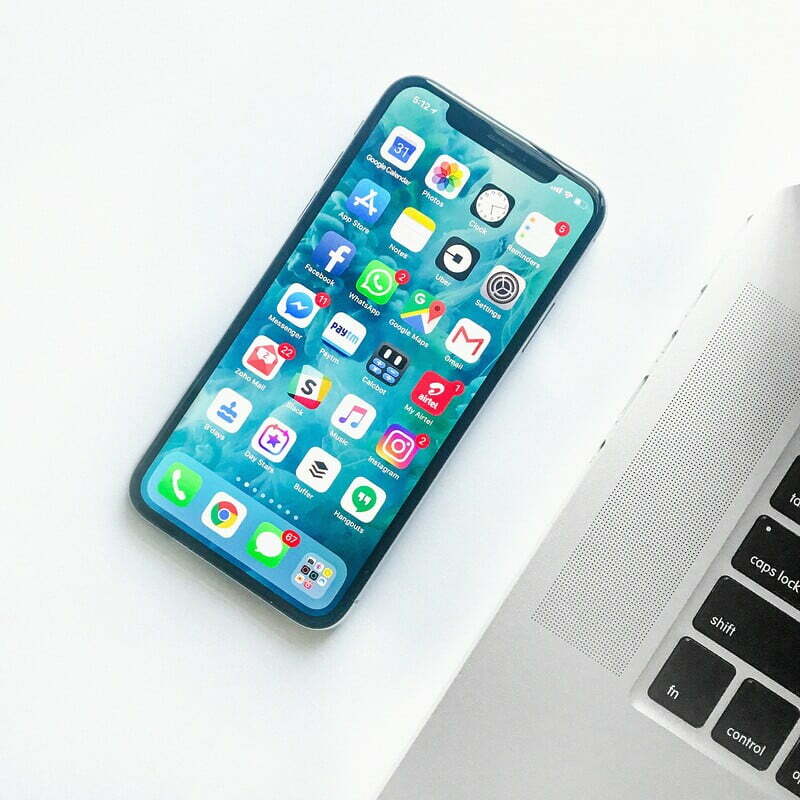The WaveWall Blog
What is SAR (Specific Absorption Rate)?
When you see mobile phone radiation being discussed, you might see the acronym SAR crop up rather often. SAR means ‘specific absorption rate’, which is probably no less confusing! Here, we’ll explain what SAR is and how it’s measured.
Table of Contents
The Issue With Phone Radiation
Phones are electronic devices packed with powerful components that generate a lot of energy. The bigger and more powerful they get, the more power-hungry they become. We now have phones with crazy processing power, phenomenal cameras and 5G capability. Phones these days are very efficient and can run on their batteries for a long time but they emit a quantity of radiation as a result of how their processing power and signal strength. Partly, mobile phones emit radiofrequency (RF) radiation through their antennae but they also emit smaller amounts of radiation from other components.
Most electronic devices emit radiation to some extent in the form of non-ionizing radiation and this is not anywhere near as harmful as ionizing radiation (e.g. x-rays, gamma rays, etc). Non-ionizing radiation is harmless in small doses or when we’re not directly exposed to it. However, whilst scientists previously thought non-ionizing radiation did not have sufficient energy to cause cell damage, opinion has shifted. A raft of studies has identified the various ways in which non-ionizing radiation, such as that emitted by a mobile phone antenna, can indeed cause DNA damage. This coupled with the fact we spend a huge amount of time on our phones, and are using them at increasingly younger ages, means that concern has rightfully amounted over mobile phone radiation as a potential public health issue.
Recently, scientists have urged governments and regulatory bodies worldwide to look at electronic device radiation levels, especially phones. There is increasing concern that we’re sleepwalking into a public health timebomb.
There are many out there who still believe this to be a sham and that there are no risks, or that non-ionizing radiation is totally harmless under every circumstance. You only have to look at some of the recent science and opinions of scientific experts, for example, this Q&A with Berkeley public health researcher Joel Moskowitz, to gauge there are genuine concerns over mobile phone radiation.
Your Body And Radiation
Many electronics emit at least some radiation but phones emit considerably more, especially when you’re on a call and the device is placed right next to your head. Our bodily tissues are like sponges, they effectively absorb the radiation emitted by our phones. The radiation doesn’t have to be particularly harmful, but over time, damage can rack up and ultimately result in genetic mutations and permanent tissue damage. This may rarely lead to cancer, infertility and other issues. The truth is, whilst many impacts of mobile phone radiation have been discussed at length in scientific communities and researched to some extent, we still are not sure of how the body can withstand a lifetime of mobile phone use.
SAR – Specific Absorption Rate
Mobile phone radiation is tested as a legal regulatory requirement in most countries and continents around the world. The measurement unit or figure given for this is specific absorption rate, or SAR. Most people probably will have never heard of SAR but it is available for every mobile phone manufactured by any mainstream manufacturer.
SAR, measured in watts/kg of tissue, measures the rate that radiofrequency (RF) radiation is absorbed into the body from the device being measured, usually phones. A typical SAR figure might be 1.5W/kg. This means for each kilogram of tissue, the body absorbs 1.5w of radiation energy.
Essentially, then, SAR measures the penetration of radiation and discovers how much radiation travels through our bone and skin into more vulnerable tissues, like the brain.
Ultimately, radiation is only damaging when we absorb it and it gets beneath our skin. It’s only then that it can start to affect us on a molecular level. The skin does provide some protection against many forms of radiation, that’s partially why it’s there – to protect us from the sun. And then there is bone, which also acts as padding for any radiation emitted by electronic devices. Of course, most of our body is not boney but our skulls are and this plays an important role in shielding our brains – our most complex and vulnerable organ – from radiation. Specific absorption rate measures how much radiation is absorbed into the soft tissues underneath the surface of the body – the tissues that are most vulnerable to radiation.
SAR Regulatory Limits
Different countries or regions around the world have slightly different legal limits for SAR.
The regulatory limits are 2W/kg in Europe and 1.6W/kg in the USA. Independent labs are used to carry out the tests and report them to regulatory bodies
The Measurement Process
SAR is typically measured using phantom or fake body parts of the head and body. These are usually filled with liquids that are designed to emulate human tissues. Phones are usually tested in 3 ways:
- At maximum power across all the radio frequencies at which it operates
- In various operating frequencies
- In different positions next to the head and torso, for varying periods of time
Results are compiled and usually, only the highest measurements will be used. Manufacturers must publish the SAR data of their phones in most regions worldwide.

The Unreliability Of SAR
SAR is tricky to measure and there is much controversy surrounding its usefulness. To understand this, we must first understand some radiation basics.
Non-ionizing radiation, like microwaves emitted by both microwave ovens and phones, has a heating effect. When tissue and other objects are exposed to microwaves, they heat up. A microwave oven is around 700w to 1000w, which is pretty powerful, hence why it heats up relatively large items very very quickly.
Specific absorption rate measures watts/kg – this is a measurement designed primarily to measure how quickly tissues are heated by radiation. This is obviously necessary, as we don’t want our tissues to be warmed up by our phones. However, heating only tells a fraction of the story. The point is, non-ionizing radiation has been found to have other effects in addition to heating. SAR is probably not adequate for testing these other effects. Furthermore, SAR measurement techniques use averaging techniques to discover the highest SAR readings over a given period. This ignores the fact that within even the highest SAR readings are even higher peaks or spikes of radiation. The effects of these spikes is largely unknown.
Whilst SAR is necessary to determine that a phone isn’t simply far too dangerous to market, it is a poor measurement that neglects many technical aspects of modern mobile phones and social aspects of the ways we use them.
The Issues
- Labs generally position phones 5mm from the test object whereas we regularly press them against out heads or bodies which can result in much higher readings.
- Tests are short term, just a few minutes, whereas calls and other phone usages can last hours in real life.
- Mobile phone signal can fluctuate greatly in real life, especially if a phone is struggling to find reception, thus causing temporary spikes in radiation.
- Lab models are standardised to that of a bulky individual, smaller people and children will have much thinner skulls.
How To Find Your Phone’s SAR Info
SAR info is available for most devices from the product pages of manufacturer websites. The German Federal Office for Radiation Protection did publish some lists of phone SAR levels, including some phones that were found by them to exceed legal levels. You can check out other blog posts from the WaveWall blog for SAR levels in top Android phones and SAR levels in top Apple phones.
Is A Low SAR Reading Safe?
The short answer is no. SAR is just a rough indicator of the heating effects of mobile phone radiation. It really can’t account for the nuance behind how mobile phone radiation can affect complex human tissues.
Combatting SAR is fortunately relatively easy with the service of protective cases such as the WaveWall Universal, WaveWall Card and WaveWall Flip. These cases have specially designed lab-tested and verified protective layers built in to disperse harmful radiation and prevent it from penetrating your skin. They have been shown to reduce SAR by 87%. Other than their protective layering, they work just like any other high-quality phone case.
SAR – An Unknown Quantity
Overall, mobile phone radiation and the effects it can have on us are developing all the time. SAR is pretty crude for the most part and it only really measures the effect of heating from non-ionizing radiation. In time, we will hopefully devise more accurate tests to gauge the harmful effects of non-ionizing radiation but for now, all we have is SAR and our own intuition.
Summary
All electronic devices create some level of non-ionizing radiation but phones are particularly powerful and considering they come with a range of wireless communications such as WiFI, Bluetooth and 4G/5G, they emit substantial quantities of radiation.
SAR measures phone emissions and is an indicator of how much phone radiation is absorbed by our body’s tissues. It gives us some idea but overall, it’s a pretty shoddy measurement that doesn’t shed many clues on whether or not a phone is safe or not. Overall, evidence suggests that phones are generally not safe, even if their SAR falls well below regulatory limits. The best thing to do is to use a shielding case and limit usage.


